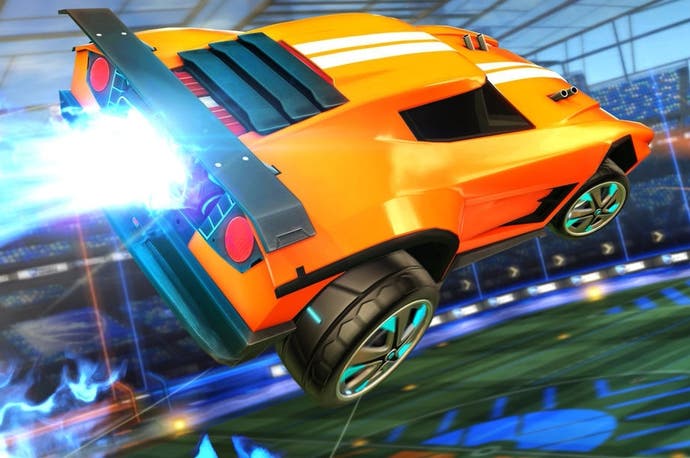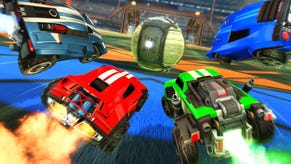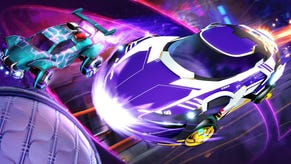Rocket League on Switch plays beautifully in mobile mode
But the docked experience falls short of the standard set by PS4.
On the face of it, a Rocket League port shouldn't prove too difficult for the Switch hardware, but it's fair to say that developer Panic Button faced a number of challenges in bringing this title to Nintendo's console hybrid. While not exactly the technological state of the art, it is a game built primarily for current-gen Sony and Microsoft hardware, automatically setting a high bar. Secondly, it's built on Unreal Engine 3 - a technology that Epic Games itself does not support on Switch. And finally, and most importantly, this game is built for 60 frames per second gameplay. Compromising here just isn't an option - it just wouldn't be Rocket League without that silky-smooth response.
The good news is that the port is in good hands. Panic Button also handled the PS4 and Xbox One versions of the title, so the studio clearly knows the game [Correction: Panic Button didn't handle the PS4 version, and the Switch port is a collaboration between Panic Button and original developer Psyonix - apologies for the confusion here]. Additionally, the team also have the required knowledge to push the Switch hardware - after all, they are also responsible for Doom 2016's remarkable port to the Nintendo console (and the same team is also confirmed for 2017's Wolfenstein conversion). The question isn't whether a Rocket League port is possible or not, it's more about how intelligently the nips and tucks are executed to get the game running on a chipset primarily designed for mobile applications.
As things stand, the final product straddles a fine line, and sees Panic Button seemingly reversing the priorities it settled on for its Doom port. Principally, the team targets 60 frames per second above all else. Rocket League's gameplay translates across extremely well as a result, and it definitely feels the part, the frame-rate only dipping when big explosions dominate the screen, or when using one of the split-screen modes. Single-player action and online play almost match the PS4 and Xbox One experience, but this does come at a cost: resolution and visual fidelity.
Compared to the PlayStation 4 version of the game, Rocket League's big compromise is its utilisation of a dynamic scaler, which hits a maximum of 1280x720 whether you're playing docked or in handheld mode, but we noted a minimum of 1024x576 in heavy split-screen action - resolutions definitely in last-gen territory. Pixel-count does tend to vary according to the match type, with the four vs four matches producing more dynamic action, and therefore a bigger hit to image quality. Meanwhile, one vs one head-to-heads will play out at a higher resolution overall. The overall impression isn't so impressive on the big screen, further compromised by poor texture filtering quality, which is a real shame bearing in mind how much ground textures dominate the field of play. Anti-aliasing is active, but combined with the ever-changing resolution, there's no doubt that playing Rocket League on a living room flat panel is perhaps compromised a little too much from a visual perspective.
In handheld mode at least, the same performance profile is in place, meaning that the majority of play rolls out at the same silky-smooth 60fps. However, the two big visual hits of the docked experience are further compromised when gaming on the go. Dynamic resolution drops even lower, so even though 720p is possible, you're more likely to be gaming at a much reduced pixel-count. Meanwhile split-screen metrics drop to 720x432 (and they could conceivably go lower - grabbing Switch portable screens is limited without access to a video feed). Additionally, texture filtering quality is reduced once again. Anti-aliasing disappears completely, while performance-sapping shadows are also totally absent.
The game looks stark and barren with shadows totally removed, but again, like Doom and many other Switch titles, the smaller screen and mobile form-factor blunts the worst of the cutbacks. The game plays just as well as it does in docked mode (and indeed on other consoles) and that's the key really: what you gain by gaming wherever you want more than offsets the visual drawbacks. For our money, the Switch is so compelling because it's bringing so many great games into the mobile space and when it comes to multi-platform ports, the docked mode is the bonus extra as opposed to the central experience it was initially marketed as.
This 'mobile works best' scenario is a situation we've seen replicated on many Switch titles this year, most recently with Resident Evil Revelations, and of course Panic Button's own Doom conversion. And perhaps it's just as well that Switch works so beautifully as a handheld - both PS4 and Xbox One are now significantly cheaper than Nintendo's hardware, and hooked up to your living room screen, offer a much-improved experience. But what they don't have are Nintendo titles, and what they can't deliver is the ability to play excellent games like Rocket League whenever you want, wherever you want. Clearly, this latest port is far from the best way to play the game, but the freedom offered by Nintendo's hardware design is difficult to ignore.




.jpg?width=291&height=164&fit=crop&quality=80&format=jpg&auto=webp)




